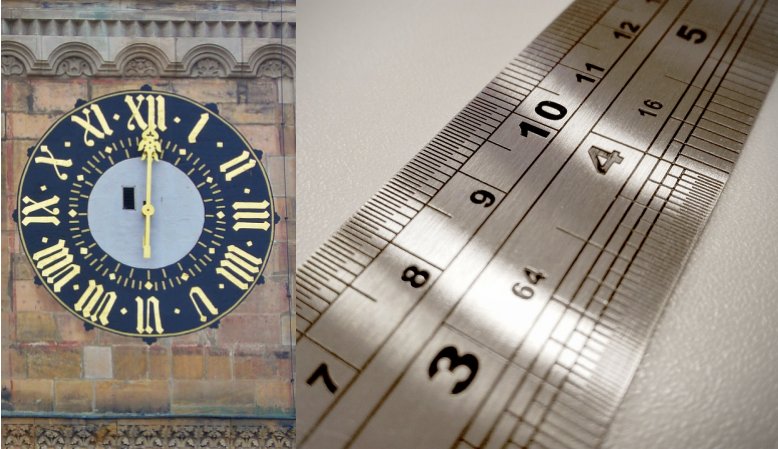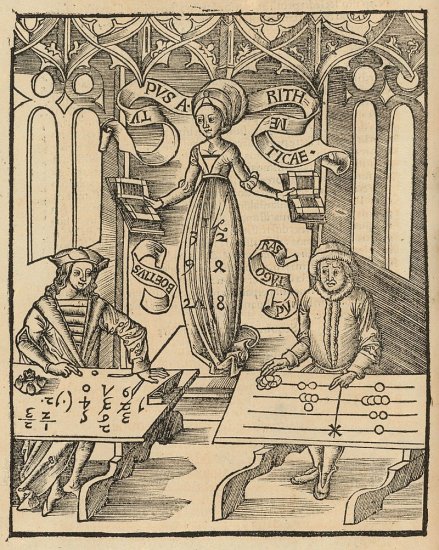Why Did We Abandon Roman Numerals?
Conny Waters - AncientPages.com - It’s often said that we’ve abandoned Roman numerals, which is not entirely true. We can still find Roman numerals on clock’s, monuments, in books, personal titles and other places. We just don’t use the Roman numerals often because we switched to the Arabic numeric system.
Credit: Public Domain
Romans numerals are a numerical system composed of seven Latin letters. Ancient Romans adapted the numerical systems from Etruscan numerals.
The symbols are I, V, X, L, C, D, and M, standing respectively for 1, 5, 10, 50, 100, 500, and 1,000 in the Hindu-Arabic numeral system.
Ancient Romans and Europeans used Roman numerals for a long time, but it’s was not a practical numerical system. For example, Roman Numerals do not have a zero (0). Arabic numbers have ten digits (from 0-9) and they give us the opportunity to produce very large numbers.
See also:
Why Is The Three Golden Balls Symbol For A Pawn Shop Connected To The Medici Family?
Torquetum: Sophisticated Medieval Astronomical Instrument
Nomenclator: Ancient Living-Human Calendar And Address Book
Merkhet – An Ancient Egyptian Timekeeping Instrument
Leonardo Fibonacci (c. 1170 – c. 1250), an Italian mathematician who is considered the most talented Western mathematician of the Middle Ages introduced the Hindu–Arabic numeral system in the Western World primarily through his composition in 1202 of Liber Abaci (Book of Calculation).
While visiting North Africa, Fibonacci learned the Hindu–Arabic numeral system and he quickly understood this system was better suitable for mathematics. It should be noted that “the Arabs did not immediately adopt the Hindu zero, because it resembled their 5; they used the superscript dot as serving their purposes fairly well.” (The Hindu-Arabic numerals- David Eugene Smith and Louis Charles Karpinski)
Through his book he managed to convince many European mathematicians to abandon Roman numerals and start using the Hindu-Arabic system instead.
Calculating-Table by Gregor Reisch: Margarita Philosophica, 1503. The woodcut shows Arithmetica instructing an algorist and an abacist (inaccurately represented as Boethius and Pythagoras). There was keen competition between the two from the introduction of the Algebra into Europe in the 12th century until its triumph in the 16th. Credit: Public Domain
To keep track of their sales and expenses, ancient European merchants relied on counting beads and Roman numerals were only used to document the results. Even though the Hindu Arabic system offered many advantages, for some reason salesmen were rather reluctant towards it, and it took time before the new numerical system became accepted.
In The Introduction of 'Arabic' Numerals in European Accounting, John W. Durham explained that “the preference for Roman numerals continued among bookkeepers until the sixteenth century, hundreds of years after the introduction of Arabic numbers. The preferences is well-known, but the causes are not.”
In time people understood that by switching to the Hindu–Arabic numeral system it was possible to solve complicated mathematical problems and counting became much easier. The new system permitted mathematical operations to be made on arbitrarily large numbers.
Written by Conny Waters – AncientPages.com Staff Writer
Copyright © AncientPages.com All rights reserved. This material may not be published, broadcast, rewritten or redistributed in whole or part without the express written permission of AncientPages.com
Expand for referencesLouis Charles Karpinski and David Eugene Smith - The Hindu-Arabic Numerals
Durham, John W. "THE INTRODUCTION OF "ARABIC" NUMERALS IN EUROPEAN ACCOUNTING." The Accounting Historians Journal 19, no. 2 (1992): 25-55. http://www.jstor.org/stable/40698081.
More From Ancient Pages
-
 ‘Dates Add Nothing To Our Culture’: Everywhen Explores Indigenous Deep History, Challenging Linear, Colonial Narratives
Featured Stories | Mar 10, 2023
‘Dates Add Nothing To Our Culture’: Everywhen Explores Indigenous Deep History, Challenging Linear, Colonial Narratives
Featured Stories | Mar 10, 2023 -
 Millennia Old Extremely Complex Object Of Unknown Origin
Ancient Technology | Jul 8, 2020
Millennia Old Extremely Complex Object Of Unknown Origin
Ancient Technology | Jul 8, 2020 -
 Venus Cloacina: Roman Goddess Of Sewers And Drains
Featured Stories | Dec 19, 2019
Venus Cloacina: Roman Goddess Of Sewers And Drains
Featured Stories | Dec 19, 2019 -
 Oldest Canoe Ever Discovered In Maine – It Dates To 1280-1380 A.D
Archaeology | Jun 13, 2019
Oldest Canoe Ever Discovered In Maine – It Dates To 1280-1380 A.D
Archaeology | Jun 13, 2019 -
 Andvaranaut: Magical Ring That Made Gold And Was Stolen By Norse God Loki
Featured Stories | Apr 12, 2017
Andvaranaut: Magical Ring That Made Gold And Was Stolen By Norse God Loki
Featured Stories | Apr 12, 2017 -
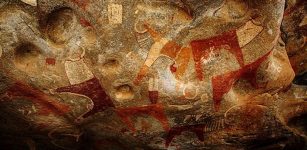 Somalia’s Legacy: Laas Geel Caves Covered With At Least 5,000-Year-Old Paintings
Civilizations | Oct 18, 2018
Somalia’s Legacy: Laas Geel Caves Covered With At Least 5,000-Year-Old Paintings
Civilizations | Oct 18, 2018 -
 Paleolithic Humans May Have Understood The Properties Of Rocks For Making Stone Tools
Archaeology | Dec 2, 2023
Paleolithic Humans May Have Understood The Properties Of Rocks For Making Stone Tools
Archaeology | Dec 2, 2023 -
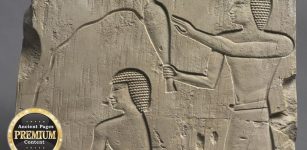 Daily Life Of Priests And Priestesses In Ancient Egypt
Ancient History Facts | Apr 5, 2018
Daily Life Of Priests And Priestesses In Ancient Egypt
Ancient History Facts | Apr 5, 2018 -
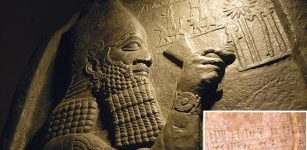 Clay Tablets Of Assyrian ‘King Of The World’ Esarhaddon Found Beneath Biblical Tomb Of Jonah
Archaeology | Mar 1, 2018
Clay Tablets Of Assyrian ‘King Of The World’ Esarhaddon Found Beneath Biblical Tomb Of Jonah
Archaeology | Mar 1, 2018 -
 Modern Humans Traveled Across The Eurasian Steppe 45,000 Years Ago
Archaeology | Aug 20, 2019
Modern Humans Traveled Across The Eurasian Steppe 45,000 Years Ago
Archaeology | Aug 20, 2019 -
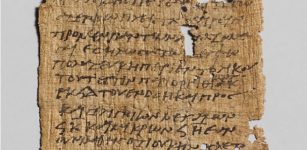 Papyri Was Still In Use After The Arab Invasion In Egypt
Archaeology | Jul 14, 2020
Papyri Was Still In Use After The Arab Invasion In Egypt
Archaeology | Jul 14, 2020 -
 Was Biblical King David Unknowingly Part Of A Secret Master Plan?
Ancient Mysteries | Jul 1, 2021
Was Biblical King David Unknowingly Part Of A Secret Master Plan?
Ancient Mysteries | Jul 1, 2021 -
 Frigg: Chief Norse Goddess Who Knew Secrets Of Humans’ Fates
Featured Stories | Dec 13, 2022
Frigg: Chief Norse Goddess Who Knew Secrets Of Humans’ Fates
Featured Stories | Dec 13, 2022 -
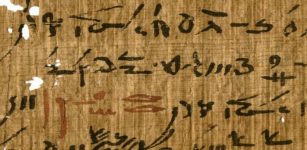 Red And Black Ink Used In Egyptian Papyri Reveal Ancient Writing Practices
News | Oct 27, 2020
Red And Black Ink Used In Egyptian Papyri Reveal Ancient Writing Practices
News | Oct 27, 2020 -
 Holmgang – Dangerous Viking Duel Settled Disputes
Ancient History Facts | Mar 10, 2018
Holmgang – Dangerous Viking Duel Settled Disputes
Ancient History Facts | Mar 10, 2018 -
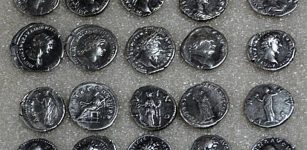 Bulgarian Archaeologists Find Nearly 3000 Coins In Clay Pot At Sofia Dig
News | Sep 8, 2015
Bulgarian Archaeologists Find Nearly 3000 Coins In Clay Pot At Sofia Dig
News | Sep 8, 2015 -
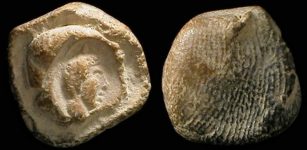 Fascinating Ancient History Of Fingerprints
Featured Stories | Jul 7, 2022
Fascinating Ancient History Of Fingerprints
Featured Stories | Jul 7, 2022 -
 Enigmatic Newport Tower – Built By The Vikings, Knights Templar, Freemasons Or Someone Else?
Featured Stories | Aug 1, 2024
Enigmatic Newport Tower – Built By The Vikings, Knights Templar, Freemasons Or Someone Else?
Featured Stories | Aug 1, 2024 -
 Was The Tree Of Knowledge Perhaps The Hall Of Records? – A Mysterious Ancient Library Containing Forbidden Knowledge
Ancient Mysteries | Mar 29, 2017
Was The Tree Of Knowledge Perhaps The Hall Of Records? – A Mysterious Ancient Library Containing Forbidden Knowledge
Ancient Mysteries | Mar 29, 2017 -
 8-Year-Old Boy Finds Unusual Viking Age Artifact On Gotland Island, Sweden
Archaeology | Sep 18, 2023
8-Year-Old Boy Finds Unusual Viking Age Artifact On Gotland Island, Sweden
Archaeology | Sep 18, 2023

